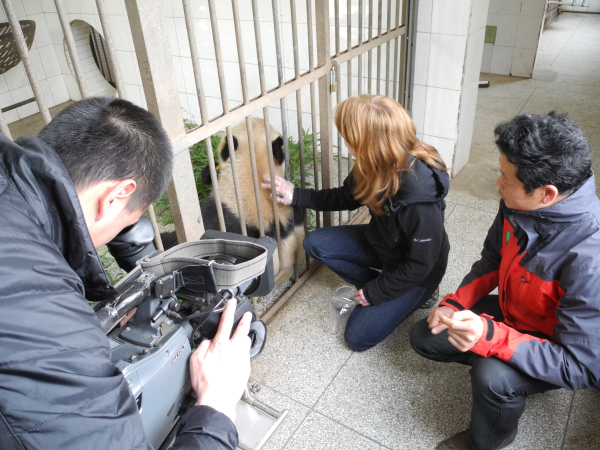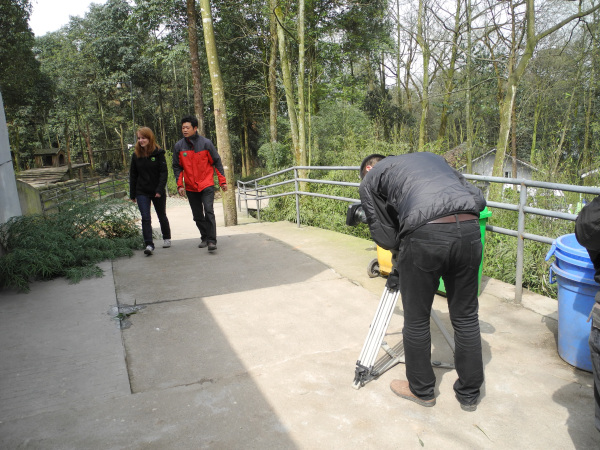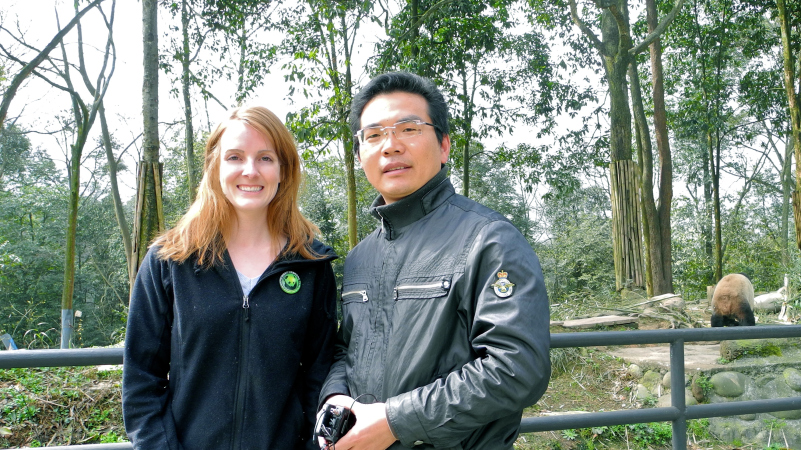It’s official – I’m a TV star in China. Or will be . . .
The last two days CCTV (China’s largest most watched network) filmed me and my research for a documentary piece on pandas in China.
They asked me why I chose to study pandas and what international researchers could do to save the species. I realized that I haven’t ever really addressed these questions even on the blog – so here goes.
Why do I study pandas?
This one’s simple – they’re SO cute! No I’m kidding, the real reason I study pandas does have a lot to do with their cuteness and their overwhelming appeal to the world population. It’s hard to explain, but pandas and their plight just “speak” to people on such a deep level. They’ve become an iconic symbol of international and world conservation. A lot of the reason I chose this species was to repeat my experiments from endangered Columbia Basin pygmy rabbits, a lesser known but still charismatic species, on a species that people would actually sit up and take notice of. I feel that if we start moving our captive breeding programs back to a more natural state (i.e. based of the natural ecology of each individual species), we may have more success in endangered species breeding programs. I also feel, and have shown in my past studies, that introducing some type of mate choice back into the equation is one of the critical steps for increasing reproductive success in endangered species. If we show that incorporating mate choice into a breeding program that is as famous as the giant panda breeding programs increases reproductive . . . well that’s half the battle. Our findings will almost automatically be big news because of the species.
And, oh yeah, did I mention that they’re cute?
What can international researchers do to help save the species?
Conservation isn’t just about LOCAL people saving their LOCAL species, it’s about people conserving world wide. Many of the local communities in developing countries strip natural resources and thus imperil local species simply because of the demand put on their economies to supply for more developed countries. Destroying local habitat won’t necessarily stop unless there is a global effort to conserve resources. The next step is to educate developing communities to not repeat some of the mistakes that developed countries already have, and to provide support where we can because . . . well, we have the means to do so! I believe it’s our duty to put some of our wealth and resources back into countries we’ve helped destroy. International scientists have so much to contribute to help guide developing countries through the very tough transitional phases of urbanization and modernization. This phase in a countries’ development is so destructive (just look at America’s Industrial Revolution and imagine it happening on 1/5 of the time scale). Scientists need to work with local people, national governments, and multinational corporations around the world to strengthen and solidify the work that has been put toward threatened species and ecosystems. After all, species and habitats are endangered because of human behaviors and conservation interventions are the product of human decisions. That means that conservation interventions will require changes in human behavior, both local and global, to succeed. We really do have to start functioning as a WORLD unit if we are to succeed in saving these fabulous species and their habitats for future generations to enjoy.
-Meg





Great work! I hope the documentary will spread..but I have no idea how much west TV cooperate with Chinas TV stations?.Did you get any videos to post here online?
I hope so too! They haven’t finished with everything yet but I asked if they would give me a copy – we’ll see 🙂
It’s nice to start spreading the word about our work regardless!